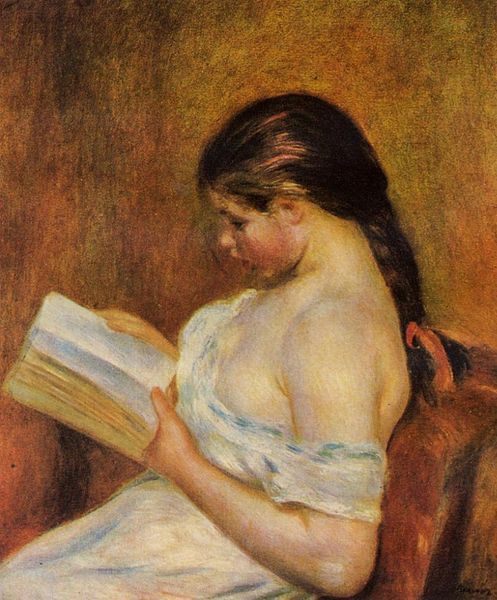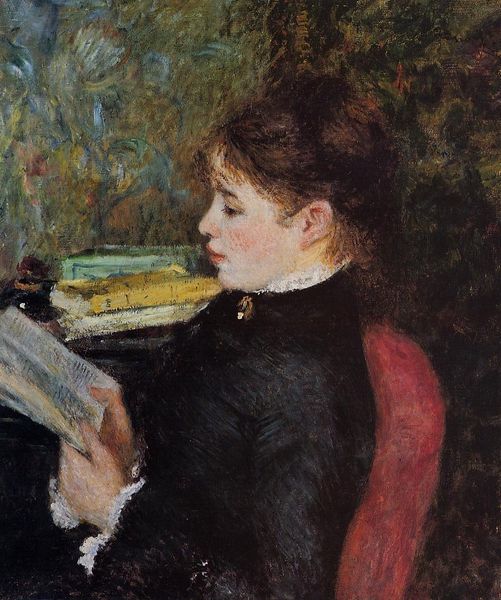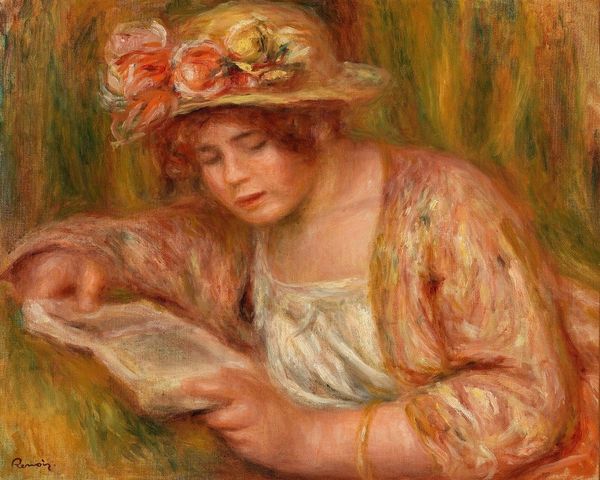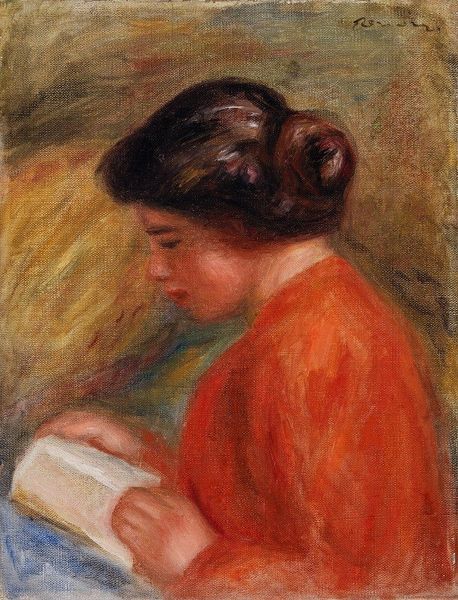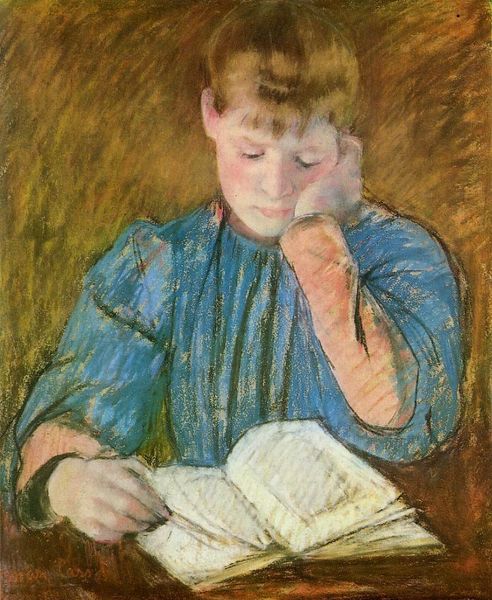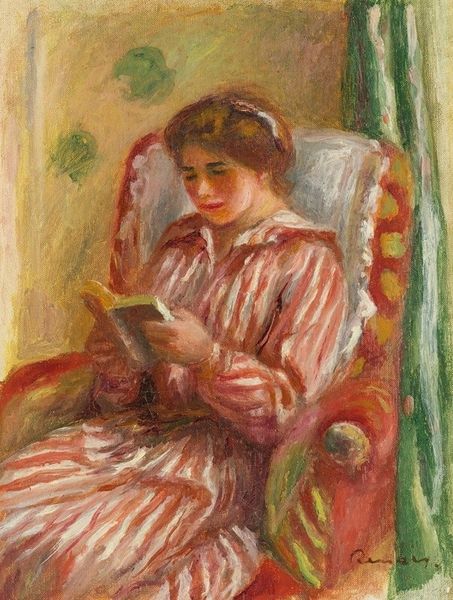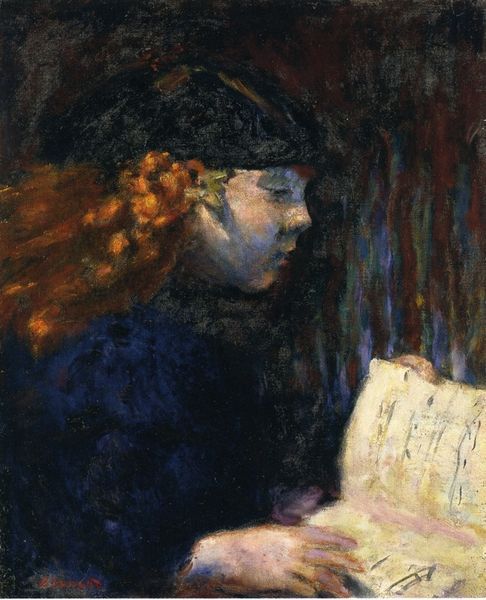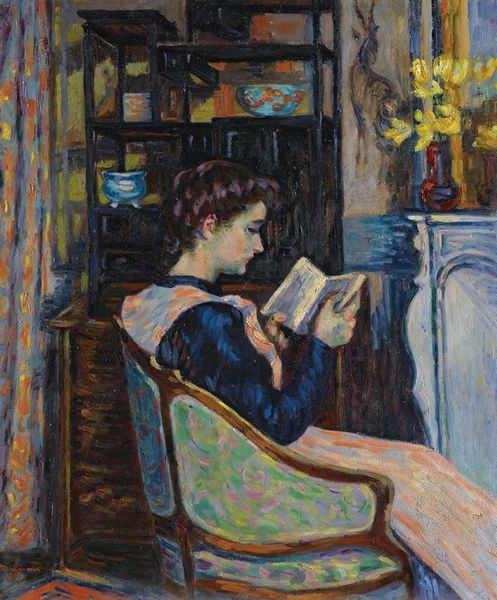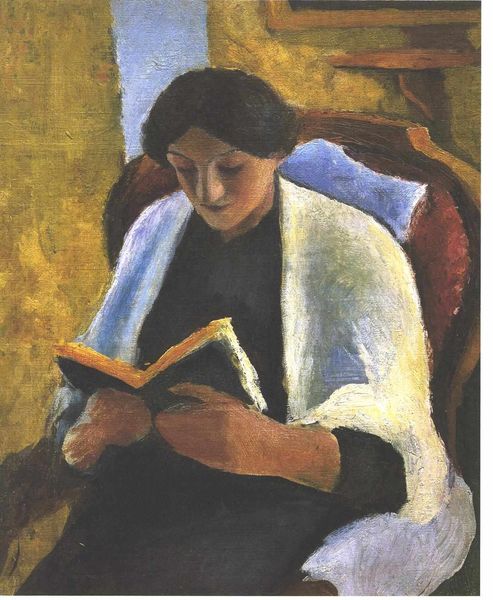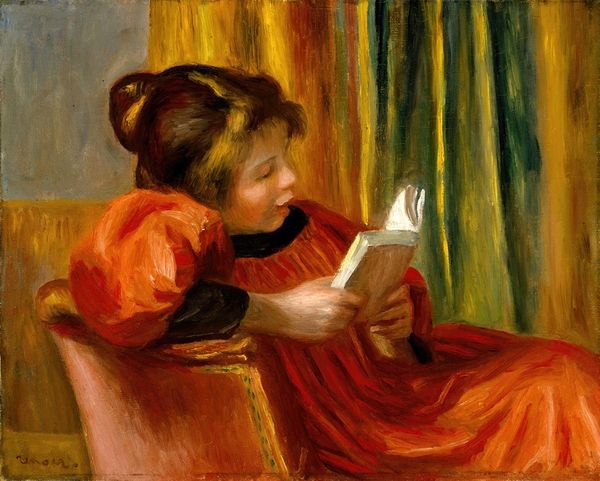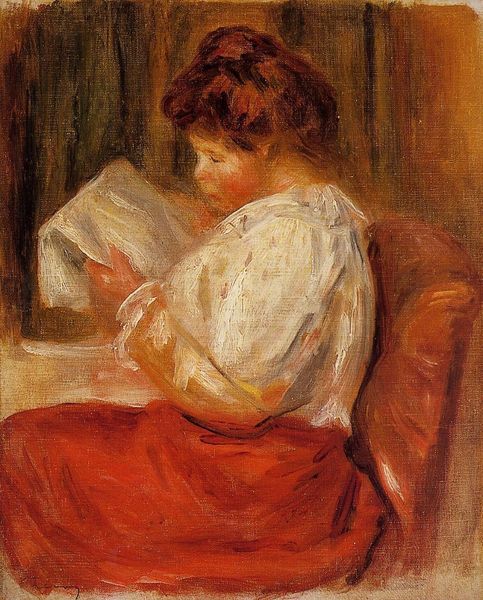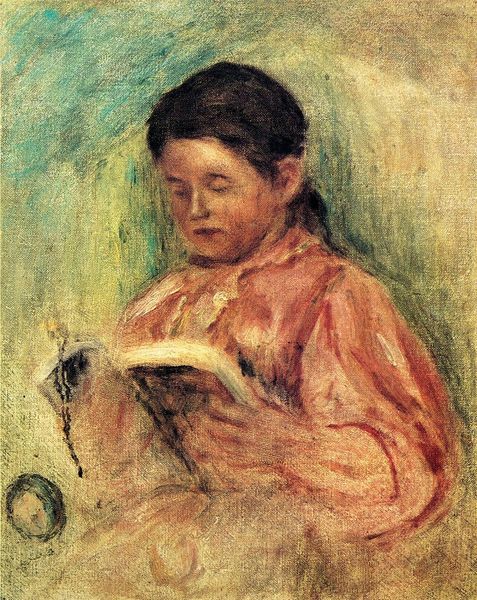
painting, oil-paint
#
portrait
#
painting
#
impressionism
#
oil-paint
#
oil painting
#
intimism
#
genre-painting
Copyright: Public domain
Curator: Isn't it marvelous how Renoir captured such quiet intensity? This is "The Reader," painted in 1876, a captivating piece currently residing at the Musée d'Orsay. Editor: My immediate reaction? An oil painting, yes, but look at the raw texture! You can almost smell the linseed and pigment. The work isn’t attempting photo realism – instead, Renoir lets us peer into his own material handling. Curator: Precisely. He isn't after meticulous detail, more like an essence of the subject's interior world. See how the light seems to bounce from her face, the blush upon her cheeks and illuminating the page. You feel she's entirely consumed. Editor: And consider the socio-economics! Who is she? Access to literacy and books then speaks to privilege and social class. What’s the symbolic import of Renoir choosing this subject matter? Curator: Intriguing point! It invites questions about the representation of women and knowledge. The intimate setting definitely points towards "Intimism" – but maybe Renoir just loved painting. Look at those flickering brushstrokes, each dab seemingly celebrating the act of painting. It's as though the sheer pleasure of making it infected the sitter, creating this feeling of inner peace. Editor: All that oil paint had to come from somewhere though! The rise of industrialized color production – and its role in enabling Impressionism's stylistic experimentation – really underscores that materiality drove artistic innovation at this time. Cheaper paints meant greater access. Curator: You're right – it made this freedom possible! What I also love is how Renoir transforms this mundane, ordinary subject – a young woman simply reading – into something so transcendent, making us believe we are witnesses. Editor: Absolutely, seeing the art, it isn't solely "inspiration" striking Renoir. He also has this all available due to certain developments in capitalism. That interweave informs both what, and how he paints. Curator: Perhaps a balance then, a fusion between pure inspiration and what’s actually possible with industrial advancement! A true symbiosis shaping something entirely its own. Editor: Well, next time I see an Impressionist painting, I will think about who extracted all that oil paint... Food for thought, isn’t it?
Comments
No comments
Be the first to comment and join the conversation on the ultimate creative platform.
